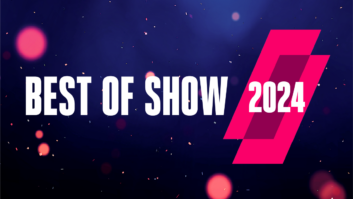Many of us can still remember when “Digital Audio Equipment” was a separate category in equipment catalogs, convention listings and other reference guides.
After the major entries for Microphones, Mixers, Turntables, Recorders, Audio Processors and Transmitters, somewhere down around Wire & Connectors or Racks & Cabinetry, we’d find a “Digital Audio” category, where things like early CD players, DAT machines and other such exotic devices were listed.
Over time, of course, “digital audio” equipment gradually migrated into most of the other mainstream categories, and that separate bin for this novelty stuff disappeared. Taking its place in the nether categories of those listings we now find retro items like Turntables, Tube Mics and Analog Audio processors — sometimes even listed under a slightly ironic “Analog Audio Equipment” category.
Looking back, we see that this listing process became inverted relatively quickly, in a classic case of paradigm shift. What was once at the fringe became mainstream and vice versa.
There’s somethin’ happenin’ here
Could a similar phenomenon be affecting our radio services themselves? It seems unthinkable today, but consider what happened in the above example. Check out the following wake-up call I experienced recently:
In searching for a radio station listing online, I consulted one of my favorite sites for this purpose, streamingradioguide.com. While hunting around this rich resource, which comprehensively lists broadcast radio stations that stream on the Internet, I noticed in the sort-by-format view an innocuous little check box (default unchecked) that said “Include
Stations Without Streaming.”
Checking this box expands the current listing to add the broadcast stations of that format nationwide that are not currently streaming any content online. Let’s see … Click … Wow.
StreamingRadioGuide.com keeps an eye on just that. It really shouldn’t have surprised me so much, I suppose, but viewing the results in such empirical and graphic terms was quite an eye-opener.
Checking that box made very little difference to the population of most format listings. The results depended somewhat on what format you were looking at — for example, more non-streaming stations appeared on the “Nostalgia/Standards” or “Oldies” page than on the “Dance/Party Music” or “Young Urban/Hip Hop” listing, as you might expect. In every format, however, the site showed that most stations were already streaming, and for some formats, only a tiny handful of stations were added to the list when non-streamers were included.
A closer look also indicated that most of the non-streamers appeared only in the smallest markets, regardless of format.
The perspective of this site is net-centric, of course, but nevertheless this experience made me realize that we could actually be seeing the beginnings of a polar shift.
Before too long, the user of such a site might say, “Oh, look — this ‘radio station’ also puts one of its streams out over the air on FM” (subtext = “Aw, how quaint.”). Such a station could become the outlier rather than the other way around, with the appearance of a few radio streams duplicated on air taking the relatively rarified place that Internet streaming of some forward-looking radio stations’ air signal occupied a few short years ago.
Of course, audience numbers have a long way to go before that happens — on-air listening still far outpaces online listening — but trends are moving in this direction. Overall online radio listening is experiencing double-digit increases while on-air audiences are generally flat or declining. We’ve seen this before, as FM audiences eventually overtook AM listening — another previously unthinkable event.
Yet this case is fundamentally different than the AM-to-FM case. Should overall online listening eventually eclipse the broadcast audience, it’s almost certain that these listeners will be spread out over a far larger number of services, and they will not all be locally originated.
Thus while cumes might shift to majority online listening, share for any service will likely never reach what broadcast stations historically enjoyed.
In fact, those days are probably already over and will not return. (As an aside, the new metrics generated by the introduction of the PPM can actually help here, in that they introduce another disconnect from the past, so comparisons to old numbers will be inherently discounted anyway.)
… What it is ain’t exactly clear
Yet another indicator of the inversion is the announcement in September by one major Internet radio provider that it now offers music programming services for radio stations.
Chicago-based Slipstream Radio, a spinoff of the well-known Accuradio service, can provide one or more customized streams to radio stations for their online use, based on whatever format(s) the station wants to offer via Internet streaming.
Typically the concept allows a station to extend its on-air brand to online, but in ways that go beyond simple streaming of the station’s air signal, and in a manner that appeals to the experienced online media user.
This includes the ability to incorporate much greater variety across multiple streams, and/or allows listeners to personalize streams to their own tastes (just as AccuRadio and similar services like Pandora do), which are processes that generally exceed the average radio station’s ability to do for themselves — at least today.
Specifically, Slipstream’s service lets online listeners pause a stream, skip songs, eliminate selected artists from their stream and mix multiple genres together into a single stream.
The service also allows stations’ on-air identity elements and promos to be integrated in their streams, along with audio and on-screen advertising sold by station staff. Slipstream offers its services to radio stations for a flat monthly fee plus bandwidth and royalty costs, or barter deals may be arranged.
These are a few of the indicators that the scales are indeed tipping in a new direction. Whether the transformation will continue until we see a complete reversal of former conditions remains to be seen. (The ultimate penetration and popularity of mobile broadband for online radio listening will have significant impact on this issue.)
In any case, it’s clear that we are in the midst of an important evolutionary moment for the industry.
Skip Pizzi is contributing editor of Radio World.













